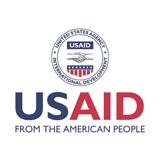
This current report is a progress update on the health research goals, established as part of the Bureau for Global Health’s 5-year (2011–2015) Health Research Strategy. USAID uses a managed research process to meet these goals. Most objectives are in the final stages or have already been completed. Highlights of this year’s report include the following accomplishments:
Ending Preventable Child and Maternal Deaths
- Advanced, in partnership with the Helping Babies Breathe program, the introduction and coverage of life-saving newborn resuscitation training and devices in health facili-ties in seven countries. USAID is developing a low-cost and easy-to-use upright neona-tal resuscitator. This model has the potential to save more lives because it delivers more volume, prevents air leakage, and has easier assembly and disassembly.
- Supported three promising new insecticide candidates to fi ght malaria that are anticipated to reach the fi nal stages of development in 2019. These new insecticides will be particularly important for addressing resistance in areas that are highly endemic to malaria.
- Chlorhexidine, a low-cost antiseptic, has been demonstrated to reduce neonatal mortality from umbilical cord infection. USAID funded early clinical trials, ac-celerated its development, supported the scale-up in Nepal through Saving Lives at Birth, and is now accelerating its introduction in 12 more countries.
- Testing strategies to successfully introduce new products to increase options for women-initiated contraception. These innovative methods were designed to address women’s concerns about side effects, options for infrequent sex, and safety during breastfeeding. • Anticipated challenges to adoption of effective cookstove technologies to help reduce indoor air pollution. These USAID-funded studies have contributed to the understanding of cooking behaviors and the most effective ways to maximize low emission cookstove use.
AIDS-Free Generation
- Continued to support promising, large-scale, efficacy trials in HIV prevention. Ongoing studies include examining tenofovir vaginal gel and the monthly dapivirine vaginal ring. USAID is undertaking planning for licensure, introduction, and scale of new HIV prevention products for women.
Protecting Communities from Infectious Diseases/Global Health Security Agenda
- Advanced development of diagnostic tools and regimens to address tuberculosis (TB). USAID supported tool diagnostic development to more effectively detect TB in individuals with and without HIV and supported research to examine regimens that improve the treatment of multidrug-resistant TB (MDR-TB).
- Identified novel viruses to more effectively target surveillance, raise awareness of risks, and engage partner governments on issues of early response. USAID supported a new set of viral pathogen detection protocols and a global network of laboratories to obtain information on 315 novel viruses.
America’s investments in global health research and development not only improve and save lives, but also help build stronger families, communities, and nations; foster stability; and contribute to economic growth. Though global health research and development represents a small portion of the federal budget, it makes important contributions toward advancing our national security, promoting our economic interests, and reaffirming our country’s exceptional role in the world.